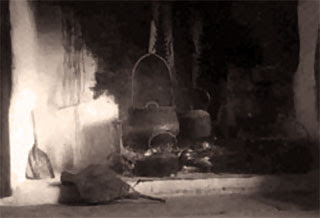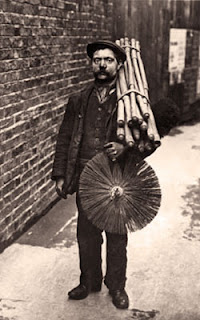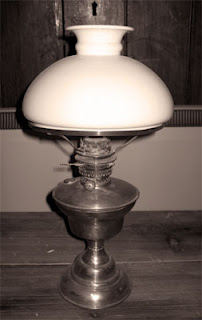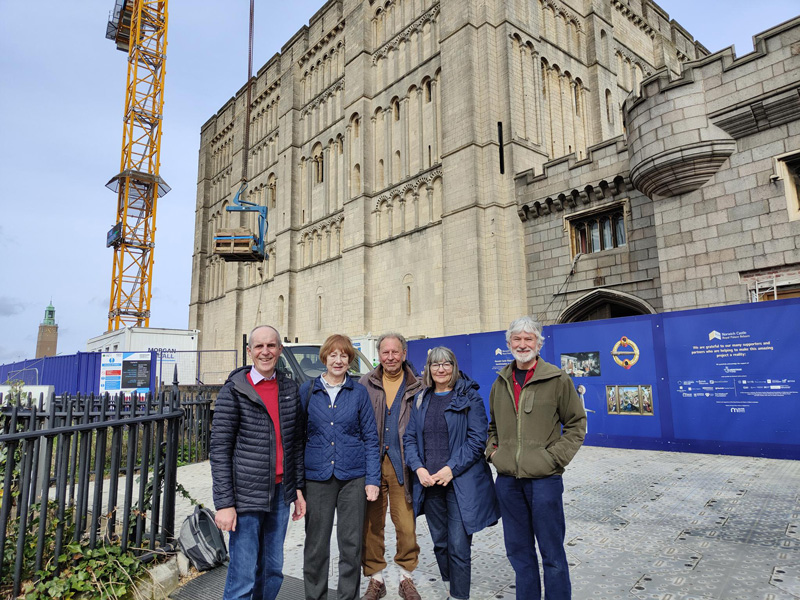Originally published: Tuesday, 8 November 2008
Summer and any hope of warm days has gone and as the browning leaves fall from the trees and block the gutters and drains we have to prepare for cold and frosty mornings. In the current climate of ‘credit crunch’ and rising costs we have a daily dilemma, do we really need to put the heating on or shall we wait another day?
The media have made sure we know that whatever we do, we will still get a nasty shock when the bills drop through our letterbox. The trouble is, we have got used to nice warm draught free rooms with carpets on the floor and a switch to control the temperature in every room. Consequently, any time we find ourselves subjected to a cold environment it probably seems worse than it really is.
Did You Know?
When the population was dependent on a fire as their only source of heat, it was usually lit in the living room where, when the weather was cold, they could all huddle round it. The oil lamps that had replaced candles still put a strain on the eyes of those who wanted to read but mother always managed to do her sewing, darning, knitting or put a patch on yet another worn garment. If there was nothing else to do it was fascinating to just sit and watch the dancing flames or the many pictures created by the dying embers. When everyone went off to bed the clotheshorse was usually put in place around the hearth. In the winter or when the weather was bad, there was no other way to air the clean linen.
Very few houses had draught free doors and windows. In fact it was deemed necessary to have some air coming into the room to ensure the fire burned brightly and to stop the smoke coming back down the chimney into the room. There were other things that made that happen. The most common cause was when the chimney needed sweeping, especially if a lot of wood had been burned. A blustery wind coming from a certain direction also had an effect if the chimney was too high or too low.
Most families had their chimney swept once every year. The Sweep was booked, usually early in the morning while most of the family were still in bed. Dad or Mum got up before he arrived to move what they could out of the room and cover anything that was left. Before the brush was put up the chimney, the Sweep covered the fireplace and placed his own sheet down over the hearth to collect any spillage. It was fortunate there were no fitted carpets in those days because no matter how careful he was some soot always managed to escape and spread in a fine layer everywhere from the floor to the ceiling. He always did his best to clear up afterwards and stayed just long enough to drink a cup of tea and collect his money. Then, throwing the sack of soot over his shoulder, he would gather up his brushes and rods and hurry off to his next job.
Only the better off could afford gas for their lighting and cooking. So, for the majority, the living room fire was not just to keep the place and the occupants warm. There was usually a tin kettle, on the point of boil, ready in case a neighbour popped in for a cup of tea. As the time for dinner approached a couple of saucepans containing prepared vegetables might be placed on the hob or perhaps a stew would be left there to simmer.
Homes with a scullery usually had a fireplace in it with an iron grate on which they stood pots and pans for cooking. This was also put to good use when the flat iron had to be heated. On one side of the fireplace an oven was built into the wall and on the other side there was a copper. Both heated by fires being lit underneath them. The copper was needed to boil the water for washday and for bath night. So if the housewife decided to bake her bread on the same day she did the washing and the family bathed, there could be three fires burning in that small room [approx: ten foot by six foot]. To avoid this and save fuel, the burning coals were sometimes moved from one to another on a shovel.
The situation eased between the wars when more people took to using oil stoves and ovens. Other than the few who had gas, everyone already depended on paraffin oil for their lighting. It was much cheaper and easier than lighting fires and believed to be cleaner. However, anyone unfortunate enough to have left an oil stove unattended when a draught caused the wick to get up high so it was issuing billows of black smoke, might not agree.
After a fire had been burning constantly in a room for some months it became necessary to wash the ceiling and give it a coat of whitewash at least once a year. Usually in the Spring. The same applied when an oil lamp, stove or oven smoked for any length of time. This was much worse than smoke from the fire because it was greasy and attached itself to everything, particularly cobwebs which, at such times, seemed to appear from nowhere.
Fortunately things improved through the 1930’s when new council estates replaced the numerous congested terraces of small cottages in our large and small towns. They had electricity and piped water with a cooking range that included an oven and boiler heated by a single fire in the kitchen. Some households still had to boil the copper when they wanted to bath but the hot water could now be pumped straight into the bath in a bathroom. From then on things changed very quickly and as electricity and gas became more readily available to all, people were no longer so dependent on solid fuel and oil.
We often hear it said that people had more time in those days but if you consider what they had to do to achieve what we get with the flick of a switch, it leaves you wondering how they fitted it all in. Bearing in mind that the results achieved by their efforts never came close to the convenience and comfort from controlled warmth we enjoy and take for granted.
What a blessing they didn’t expect to jump out of bed in the morning onto a warm soft carpet instead of ice cold lino before they hastened downstairs to light the fire and get the kettle on the oil stove for a cup of tea. They tell us they were the good old days!!?

valley lad – [FIFTY-NINE]
–













